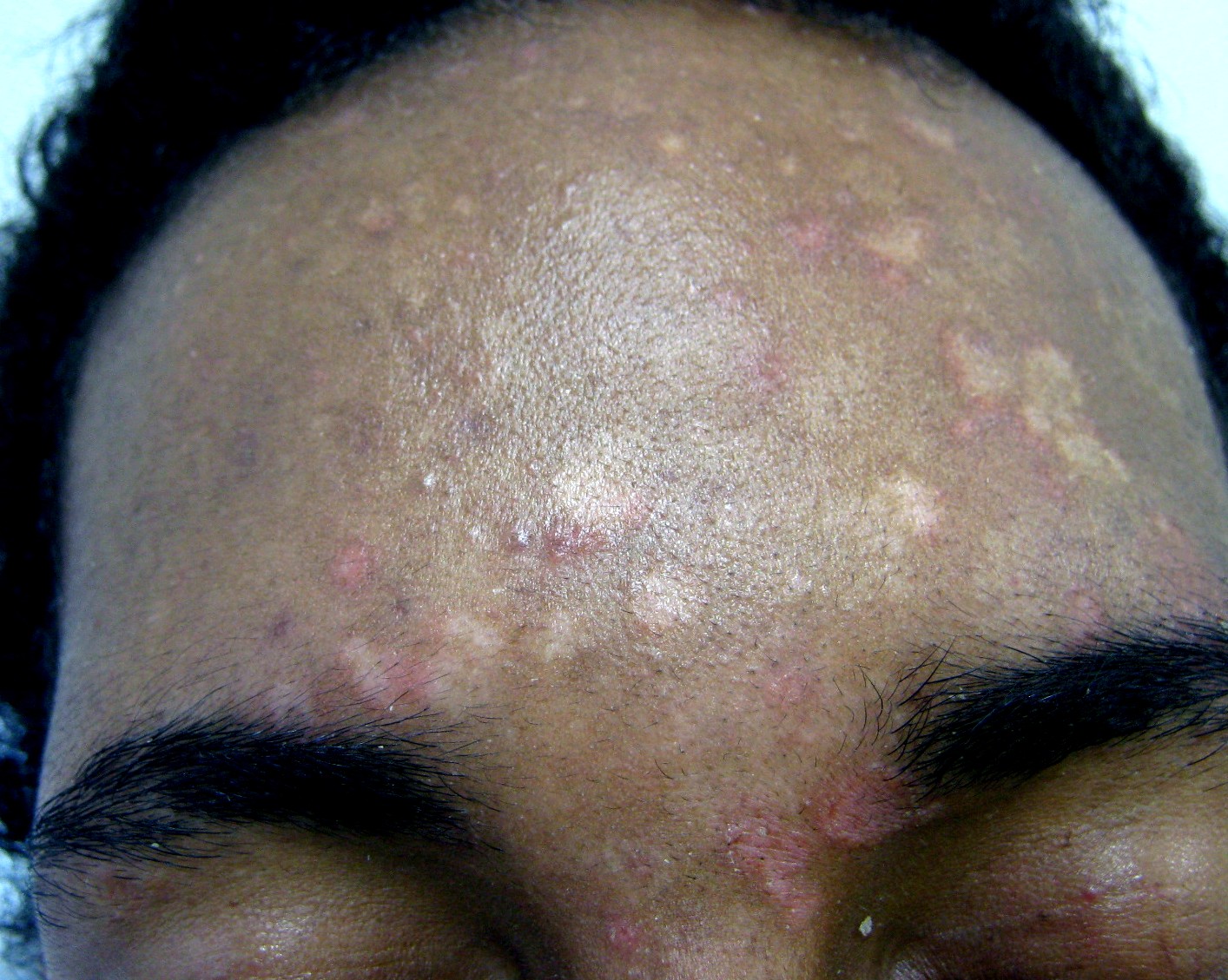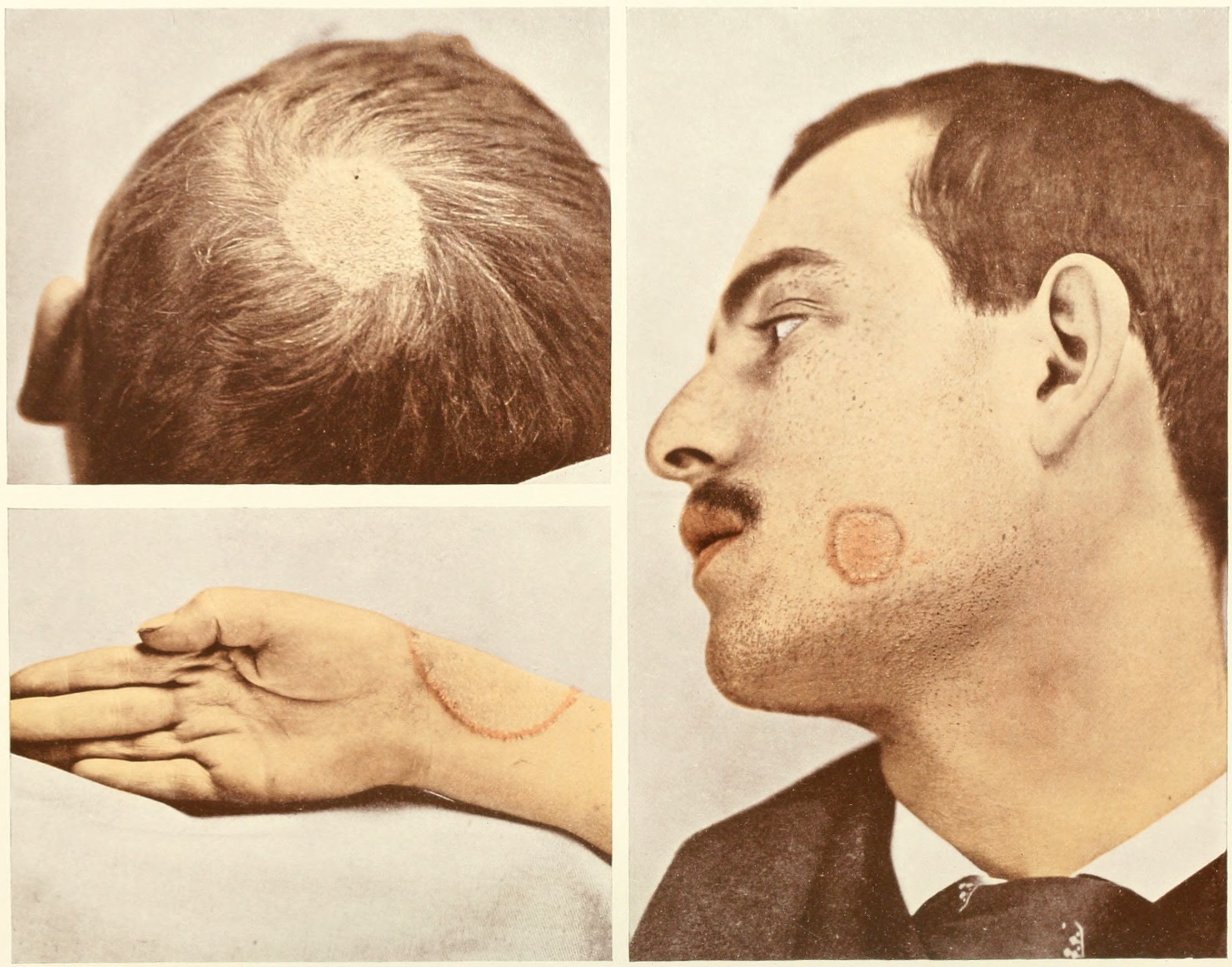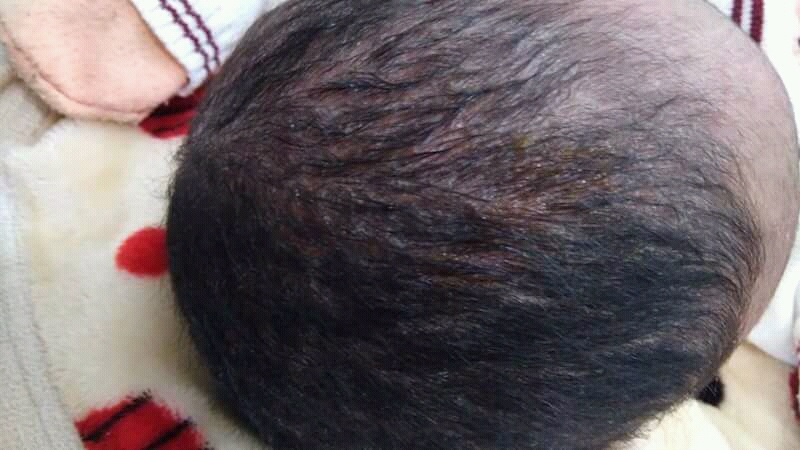|
Intertrigo
Intertrigo, commonly called “skin fold dermatitis”, refers to a type of inflammatory rash (dermatitis) of the superficial skin that occurs within a person's body folds. These areas are more susceptible to irritation and subsequent infection due to factors that promote skin breakdown such as moisture, friction, and exposure to bodily secretions and excreta such as sweat, urine, or feces. Areas of the body which are more likely to be affected by intertrigo include the inframammary fold, intergluteal cleft, armpits, and spaces between the fingers or toes. Skin affected by intertrigo is more prone to infection than intact skin. The term "intertrigo" commonly refers to a secondary infection with bacteria (such as '' Corynebacterium minutissimum''), fungi (such as '' Candida albicans''), or viruses. A frequent manifestation is candidal intertrigo. Intertrigo occurs more often in warm and humid conditions. Generally, intertrigo is more common in people with a weakened immune sys ... [...More Info...] [...Related Items...] OR: [Wikipedia] [Google] [Baidu] |
Axilla
The axilla (: axillae or axillas; also known as the armpit, underarm or oxter) is the area on the human body directly under the shoulder joint. It includes the axillary space, an anatomical space within the shoulder girdle between the arm and the thoracic cage, bounded superiorly by the imaginary plane between the superior borders of the first rib, clavicle and scapula (above which are considered part of the neck), medially by the serratus anterior muscle and thoracolumbar fascia, anteriorly by the pectoral muscles and posteriorly by the subscapularis, teres major and latissimus dorsi muscle. The soft skin covering the lateral axilla contains many hair and sweat glands. In humans, the formation of body odor happens mostly in the axilla. These odorant substances have been suggested by some to serve as pheromones, which play a role related to mate selection, although this is a controversial topic within the scientific community. The underarms seem more importa ... [...More Info...] [...Related Items...] OR: [Wikipedia] [Google] [Baidu] |
Candidal Intertrigo
Candidal intertrigo is an infection of the skin by '' Candida albicans'', more specifically located between intertriginous folds of adjacent skin. See also * Candidiasis * Intertrigo * Skin lesion A skin condition, also known as cutaneous condition, is any medical condition that affects the integumentary system—the organ system that encloses the body and includes skin, nails, and related muscle and glands. The major function of this ... References Mycosis-related cutaneous conditions {{Cutaneous-infection-stub ... [...More Info...] [...Related Items...] OR: [Wikipedia] [Google] [Baidu] |
Rash
A rash is a change of the skin that affects its color, appearance, or texture. A rash may be localized in one part of the body, or affect all the skin. Rashes may cause the skin to change color, itch, become warm, bumpy, chapped, dry, cracked or blistered, swell, and may be painful. The causes, and therefore treatments for rashes, vary widely. Diagnosis must take into account such things as the appearance of the rash, other symptoms, what the patient may have been exposed to, occupation, and occurrence in family members. The diagnosis may confirm any number of conditions. The presence of a rash may aid diagnosis; associated signs and symptoms are diagnostic of certain diseases. For example, the rash in measles is an erythematous, morbilliform, maculopapular rash that begins a few days after the fever starts. It classically starts at the head, and spreads downwards. Differential diagnosis Common causes of rashes include: * Food allergy * Medication side effects * Anxiety ... [...More Info...] [...Related Items...] OR: [Wikipedia] [Google] [Baidu] |
Urinary Incontinence
Urinary incontinence (UI), also known as involuntary urination, is any uncontrolled leakage of urine. It is a common and distressing problem, which may have a significant effect on quality of life. Urinary incontinence is common in older women and has been identified as an important issue in geriatric health care. The term enuresis is often used to refer to urinary incontinence primarily in children, such as nocturnal enuresis (bed wetting). UI is an example of a stigmatized medical condition, which creates barriers to successful management and makes the problem worse. People may be too embarrassed to seek medical help, and attempt to self-manage the symptom in secrecy from others. Pelvic surgery, pregnancy, childbirth, attention deficit disorder (ADHD), and menopause are major risk factors. Urinary incontinence is often a result of an underlying medical condition but is under-reported to medical practitioners. There are four main types of incontinence: * Urge incontinence ... [...More Info...] [...Related Items...] OR: [Wikipedia] [Google] [Baidu] |
Barrier Cream
A barrier cream is a Topical medication, topical formulation used in industrial applications and as a cosmetic to place a physical barrier between the skin and contaminants that may irritate the skin (contact dermatitis or occupational dermatitis). There are many other terms for creams designed to protect skin from harmful substances, including skin protective creams, pre-work creams, antisolvent gels, protective ointments, and shielding lotions. Three classes of barrier creams are used: water repellent creams, water-soluble creams, and creams designed for special applications. Barrier creams may contain substances such as zinc oxide, talc or kaolin to layer over the skin. For hand care they are designed to protect against the harm from detergents and other irritants. The efficacy of barrier creams is controversial. They have not been demonstrated to be useful in preventing hand eczema. A 2018 Cochrane review concluded that the use of moisturizers alone or in combination with bar ... [...More Info...] [...Related Items...] OR: [Wikipedia] [Google] [Baidu] |
Tinea Corporis
Tinea corporis is a fungal infection of the body, similar to other forms of tinea. Specifically, it is a type of dermatophytosis (or ringworm) that appears on the arms and legs, especially on glabrous skin; however, it may occur on any superficial part of the body. Signs and symptoms It may have a variety of appearances; most easily identifiable are the enlarging raised red rings with a central area of clearing (ringworm). The same appearances of ringworm may also occur on the scalp (tinea capitis), beard area ( tinea barbae) or the groin ( tinea cruris, known as jock itch or dhobi itch). Other classic features of tinea corporis include: * Itching occurs on infected area. * The edge of the rash appears elevated and is scaly to touch. * Sometimes the skin surrounding the rash may be dry and flaky. * Almost invariably, there will be hair loss in areas of the infection. Causes Tinea corporis is caused by a tiny fungus known as dermatophyte. These tiny organisms normally live on ... [...More Info...] [...Related Items...] OR: [Wikipedia] [Google] [Baidu] |
Tinea Versicolor
Tinea versicolor (also pityriasis versicolor) is a condition characterized by a skin eruption on the trunk and proximal extremities. The majority of tinea versicolor is caused by the fungus '' Malassezia globosa'', although '' Malassezia furfur'' is responsible for a small number of cases. These yeasts are normally found on the human skin and become troublesome only under certain conditions, such as a warm and humid environment, although the exact conditions that cause initiation of the disease process are poorly understood. The condition pityriasis versicolor was first identified in 1846. Versicolor comes from the Latin ' 'to turn' + ''color''. It is commonly referred to as Peter Elam's disease in many parts of South Asia. Signs and symptoms The signs of this condition include: * Occasional fine scaling of the skin producing a very superficial ash-like scale * Pale, dark tan, or pink in color, with a reddish undertone that can darken when the patient is overheated, such as ... [...More Info...] [...Related Items...] OR: [Wikipedia] [Google] [Baidu] |
Dermatophytosis
Dermatophytosis, also known as tinea and ringworm, is a fungal infection of the skin (a dermatomycosis), that may affect skin, hair, and nails. Typically it results in a red, itchy, scaly, circular rash. Hair loss may occur in the area affected. Symptoms begin four to fourteen days after exposure. The types of dermatophytosis are typically named for area of the body that they affect. Multiple areas can be affected at a given time. About 40 types of fungus can cause dermatophytosis. They are typically of the '' Trichophyton'', '' Microsporum'', or '' Epidermophyton'' type. Risk factors include using public showers, contact sports such as wrestling, excessive sweating, contact with animals, obesity, and poor immune function. Ringworm can spread from other animals or between people. Diagnosis is often based on the appearance and symptoms. It may be confirmed by either culturing or looking at a skin scraping under a microscope. Prevention is by keeping the skin dry, not w ... [...More Info...] [...Related Items...] OR: [Wikipedia] [Google] [Baidu] |
Seborrheic Dermatitis
Seborrhoeic dermatitis (also spelled seborrheic dermatitis in American English) is a long-term skin disorder. Symptoms include flaky, scaly, greasy, and occasionally itchy and inflamed skin. Areas of the skin rich in sebum, oil-producing glands are often affected including the scalp, face, and chest. It can result in social or self-esteem problems. In babies, when the scalp is primarily involved, it is called cradle cap. Mild seborrhoeic dermatitis of the scalp may be described in lay terms as dandruff due to the dry, flaky character of the skin. However, as dandruff may refer to any dryness or scaling of the scalp, not all dandruff is seborrhoeic dermatitis. Seborrhoeic dermatitis is sometimes inaccurately referred to as seborrhoea. The cause is unclear but believed to involve a number of genetic and environmental factors. Risk factors for seborrhoeic dermatitis include immunocompromised, poor immune function, Parkinson's disease, and alcoholic pancreatitis. The condition ma ... [...More Info...] [...Related Items...] OR: [Wikipedia] [Google] [Baidu] |
Candidiasis
Candidiasis is a fungal infection due to any species of the genus '' Candida'' (a yeast). When it affects the mouth, in some countries it is commonly called thrush. Signs and symptoms include white patches on the tongue or other areas of the mouth and throat. Other symptoms may include soreness and problems swallowing. When it affects the vagina, it may be referred to as a yeast infection or thrush. Signs and symptoms include genital itching, burning, and sometimes a white "cottage cheese-like" discharge from the vagina. Yeast infections of the penis are less common and typically present with an itchy rash. Very rarely, yeast infections may become invasive, spreading to other parts of the body. This may result in fevers, among other symptoms. Finally, candiasis of the esophagus is an important risk factor for contracting esophageal cancer in individuals with achalasia. More than 20 types of ''Candida'' may cause infection with '' Candida albicans'' being the most common. Inf ... [...More Info...] [...Related Items...] OR: [Wikipedia] [Google] [Baidu] |
Atopic Dermatitis
Atopic dermatitis (AD), also known as atopic eczema, is a long-term type of inflammation of the skin. Atopic dermatitis is also often called simply eczema but the same term is also used to refer to dermatitis, the larger group of skin conditions. Atopic dermatitis results in puritis, itchy, red, swollen, and cracked skin. Clear fluid may come from the affected areas, which can thicken over time. Atopic dermatitis affects about 20% of people at some point in their lives. It is more common in younger children. Females are affected slightly more often than males. Many people outgrow the condition. While the condition may occur at any age, it typically starts in childhood, with changing severity over the years. In children under one year of age, the face and limbs and much of the body may be affected. As children get older, the areas on the insides of the knees and folds of the elbows and around the neck are most commonly affected. In adults, the hands and feet are commonly affec ... [...More Info...] [...Related Items...] OR: [Wikipedia] [Google] [Baidu] |






